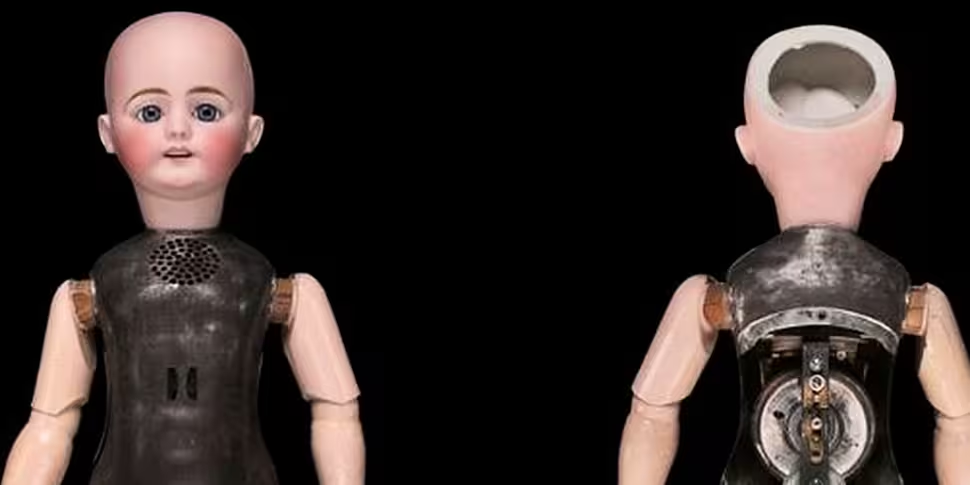Not content with lighting up the world with the incandescent bulb or the movie camera, American inventor Thomas Edison was hell bent on creating a toy empire, and in 1887 produced a talking doll so frightening that the only child who would want to hear it is Rosemary’s Baby.
Pushed on to experiment following the roaring success of his phonograph, Edison and his business partners tinkered away with the children’s playthings, founding the ‘Edison Phonograph Toy Manufacturing Company’. Their grand plans all revolved around placing a tiny phonograph inside a doll, and selling off the talking toy to little girls and their deep-pocketed parents all over the world. The outcome? A spectacular failure that singlehandedly emotionally scarred countless children.

Edison phonograph exhibit at 1889 Exposition Universelle De Paris [NPS]
The problem was shipping and delivery, as the delicate wax cylinder records hidden in the dolls’ abdomens often suffered damage en route, and according to the New York Times, children were terrified.
While porcelain dolls’ dead-eyed glare have been quietly terrifying people for generations, the distorted voices and manic stare of the doll made it instantly unpopular after a sales craze in Christmas 1890. Only a small number of the dolls still remain in the world today, coveted by the most serious private collectors. A few have been sourced by the Thomas Edison National Historical Park, in West Orange, New Jersey, but the with records so damaged that the dolls seemed to have forever lost their voices.

The Manufacture of Edison's Talking Doll", Scientific American magazine, April 26, 1890 [NPS]
And that’s where science starts meddling with the forces of evil, returning the demon to the doll through a high-tech audio system called IRENE-3D. This optical scanner can recreate a digital model of the surface of the dolls’ original phonographs, reproducing the audio in a WAV file.
Using this cutting-edge audio technology, the specific grooves on the cylinders have managed to reveal eight separate recordings used in different dolls. And... they’re not for the fainthearted. Listening to them, the standout has to be Now I Lay me Down to Sleep, a pleading prayer rendered incredibly creepy.









